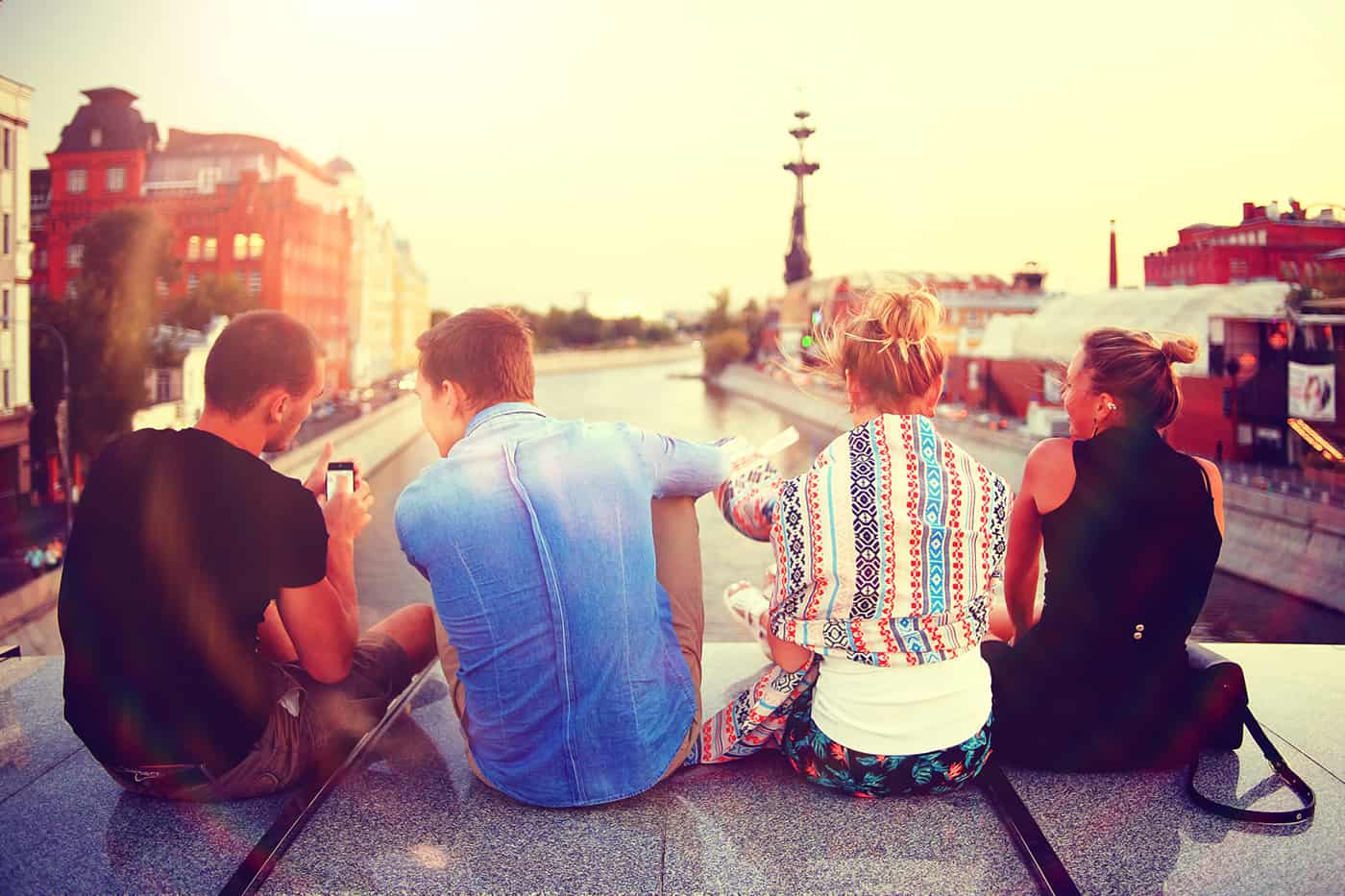
The city as seen by 15 to 25-year-olds
In February 2021, we surveyed 1,000 young people aged 15 to 25 about their relationship with the city. The responses, collected by Jam via the JAM chatbot on Messenger, are packed with findings!

Young people seem to be fairly satisfied with where they live, with almost half of them rating it 4 or more out of 5.
But beyond their current situation, what are young people’s aspirations?
Is the city the ideal place for young people to live?
Where do young people want to live?
Far from idealising other prospects, young people usually say their ideal home is in their current living environment. While 25% choose a medium-sized city and 19% a large city, 31% prefer to live in the countryside or a village.What does an attractive living environment mean for them?
Entertainment and shops, safety and a pleasant climate are young people’s top three priorities for a pleasant living environment. Nevertheless, priorities seem to change with age; the interest in a pleasant climate and the desire to be close to nature and family, for example, increases with age. As for the desire for nature near their homes, young people aspire more to a change of scenery than standard revegetated areas: 63% of young people want wild nature, micro-forests or parks – rather than maintained nature, tree-lined streets or lawns – near their home!Has Covid transformed the relationship between young people and the city?
City life seems to have lost its attractiveness during the Covid crisis, having been limited by the pandemic measures (less going out, loss of social connections). Many people now say they’re attracted to a life closer to nature. Max, a 23-year-old Parisian, says: “The lockdown made me want to live in the open air and get out of consumerist society – which I’ve never identified with – even more. My dream is to live in the great outdoors and work for myself without doing anything else. Have a family and live simply.” This is a good time for people to refocus on themselves: their mental health, but also their values, diet and commitments. Work is also central to their reflection process: from difficult job searches to striving for meaning in work, work experienced as the only activity during lockdown or new prospects made possible by working remotely, the relationship with work is being widely questioned: “Car work car… I feel like I’m back in the USSR where work is a very important part of life…” François, 23, living in Essonne.Young people and transport
What do young people look for when they travel?
Travel is an important part of young French people’s daily lives. While speed of travel is a priority for young working people, more than a third of them spend more than 30 minutes on daily journeys. In the Paris region, 59% spend more than half an hour. When travelling, 27% of young people prefer using their own vehicle. Nevertheless, these results differ across regions. In the Paris region for example, only one young person in ten is interested in having their own vehicle. Age also influences travel priorities: twice as many 15 to 18-year-olds as 22 to 25-year-olds make environmental impact the number one priority in their choice of travel mode (18% compared to 9%).Transport as a driver for the environment
To support the environment, 62% of young people believe that transport policies are the most relevant driver on a city scale: improving public transport, limiting the use of private cars and developing cycle paths are the most cited initiatives. This is followed by waste management (cited by 37%) and developing green spaces (14%). Lastly, young people plan to use electronic services to limit their travel. Six out of ten young people believe that administrative procedures are the activities that can be most easily performed electronically. Next come studies and shopping.Citizen involvement and neighbourhood life
How do young people get involved in their city?
Young people participate in the life of their city. More than 4 out of 5 young people are involved in causes or are prepared to do so. The environment is the cause chosen by the most young people, accounting for 22% of young people involved. Youth engagement takes place through different means and at different levels:- Some are involved in field actions (speaking to homeless people, helping to restore monuments, running the local football club)
- Others get involved through work (creating an impact company, taking on responsibilities at the town hall)
- They also engage remotely (by sharing content, using responsible search engines, signing petitions)
- Or by making donations.
Neighbourhood and safety
4 out of 5 young people would like to have a relationship with their neighbours that isn’t just about being polite. Mutual support is one of the aspects they would like to develop further, especially 22 to 25-year-olds. This desire to help each other is shared by young people wherever they live: large, medium-sized or small towns, suburbs, rural areas or villages. Moreover, one young person in three believes that this mutual support between residents would be the most effective way of combating safety issues in the city. 40% of girls surveyed and 15% of boys said they felt unsafe everywhere at night. To improve safety, while mutual support between residents received the most votes, public measures were the next most popular: more police, good lighting and security cameras (24%, 22% and 18% respectively).To summarise
15 to 25-year-olds are attached to where they live, particularly when it comes to supporting the environment. They want lively but secure environments, where mutual support and neighbourhood life are developed.Most read
More reading
Read also




What lies ahead? 7 megatrends and their influence on construction, real estate and urban development
Article
20 minutes of reading

